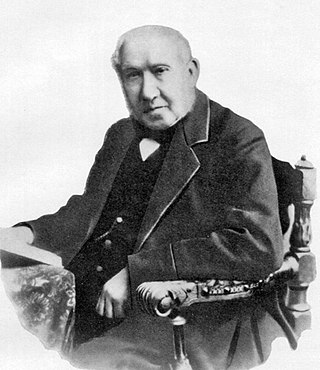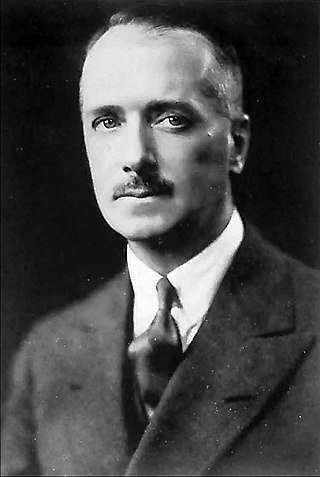Related Research Articles

Raffles Place MRT station is an underground Mass Rapid Transit (MRT) interchange station on the North–South Line (NSL) and East–West Line (EWL) in Singapore. Located in the Downtown Core, the station is underneath Raffles Place south of the Singapore River. The station serves various landmarks including The Fullerton Hotel, Merlion Park and the Asian Civilisations Museum and various commercial buildings such as One Raffles Place and OCBC Centre.

Raffles Place is the centre of the Financial District of Singapore and is located south of the mouth of the Singapore River. It was first planned and developed in the 1820s as Commercial Square to serve as the hub of the commercial zone of Singapore in Raffles Town Plan. It was renamed Raffles Place in 1858 and is now the site of a number of major banks. It is located in the Downtown Core within the Central Area, and features some of the tallest buildings and landmarks of the country.

The National Trades Union Congress (NTUC), also known as the Singapore National Trades Union Congress (SNTUC) internationally, is the sole national trade union centre in Singapore. NTUC leads the labour movement of Singapore, comprising 59 affiliated trade unions, 5 affiliated trade associations, 6 social enterprises, 6 related organisations and other enterprise partners.
Public radio broadcasting began in Singapore in April 1925 after the Amateur Wireless Society of Malaya obtained a temporary license to broadcast. Radio Singapura was established as the first local mass market radio service in 1959. Subsequently, on February 15, 1963, before the withdrawal of the British Armed Forces and after the merger with Malaya, Singapore's first television service began as Televisyen Singapura under its owner, Radio Television Singapore (RTS).

The Singapore Conference Hall, formerly the Singapore Conference Hall and Trade Union House, is a multipurpose building in Shenton Way, Singapore. Designed in modernist style, the SCH is five stories tall and capped with a cantilevered V-shaped roof. The SCH houses the Singapore Chinese Orchestra (SCO); the concert hall has a capacity of 831 people. It was the first post-colonial building to be gazetted as a national monument in Singapore.

The former Asia Insurance Building, now named Ascott Raffles Place, lies in the heart of the Central Business District of Singapore, at the corner of Finlayson Green and Raffles Quay. Standing at 270 feet, it surpassed the Cathay Building to be the tallest tower in Singapore until the completion of Meritus Mandarin Tower 1 in 1971. Designed by one of Singapore's pioneer architects, Ng Keng Siang, the office building was completed in 1955 and served as the headquarters for the Asia Insurance Company, one of the first local insurance companies. In 2006, the building was acquired by the Ascott Group and the office tower has since been refurbished into a serviced apartment residence. Renamed as Ascott Raffles Place, the building sits on a 999-year leasehold site with a building footprint of about 950 square meters.
John Buttery was a merchant operating in the Straits Settlements of Penang, Malacca and Singapore. He was, at the time of his death, the senior partner of Sandilands, Buttery & Co., and John Buttery & Co..

Edward Boustead (1800–1888) was an English businessman and philanthropist, who founded Boustead & Co and played an active role in the development of Singapore as a business and trading centre. Boustead was born in Yorkshire, England. He was the great-grandfather of actor David Niven.
The Singapore Free Press was an English-language daily broadsheet newspaper based in Singapore.

Charles Montague Ede, JP was a Hong Kong businessman and unofficial member of the Executive Council and Legislative Council of Hong Kong.
The Singapore National Co-operative Federation (SNCF) is a body of co-operative movements in Singapore. It was formed in September 1980. It is a member of several global co-operative bodies such as the International Co-operative Alliance, the World Council of Credit Unions, and the Association of Asian Confederation of Credit Unions.
Sir Hayes Marriott was a British colonial administrator. Marriott joined the Straits Settlement Civil Service in 1896 as a cadet and rose to the high position of Colonial Secretary before retiring in 1928.

Wilfred Lawson Blythe was a British colonial administrator who served as the second Colonial Secretary of Singapore from 30 June 1950 to 30 July 1953.
George Hemmant was a colonial administrator. He joined the Malayan Civil Service and was a cadet on 27 November 1903. He served most of his civil service career in Federated Malay States and Straits Settlements.

Sir John Fitzgerald Brenan KCMG, was a British diplomat in China who served as British Consul General in Shanghai in the 1930s.
The Shell House, later known as the Singapore Rubber House, or simply Rubber House, was a skyscraper in Collyer Quay, Singapore. It was officially opened in 1960 as the Singapore headquarters of Shell plc. At the time of the building's completion, it was the fourth tallest building in Singapore, rising over 190 ft above ground level.
On 21 November 1972, a fire broke out at a Robinson & Co. department store in Raffles Place, Singapore. The fire killed nine people and is regarded as one of the worst fires in Singapore's history. A subsequent investigation revealed the cause of the fire was a short circuit. Safety recommendations were produced in the investigation report which are still adhered today.

Boustead Institute was a building located at the junction of Tanjong Pagar Road and Anson Road in Singapore which initially served as a hostel for seamen. It later housed the Toby's Paradise bar, and was demolished in the 1970s.
Norman Rowlstone Jarrett CMG was a British colonial administrator in Malaya.

Alkaff Arcade, also known as The Arcade, was a historic building on Collyer Quay in Singapore. Completed in 1909 for the Alkaff family, it was the first indoor shopping centre on the island. Known for its Moorish-style architecture, it was "hailed as Singapore’s best-known waterfront landmark". The building was demolished in 1978 to make way for an office tower.
References
- 1 2 3 "SINGAPORE DEVELOPMENT". The Straits Times . Singapore. 23 January 1924. Archived from the original on 11 July 2022. Retrieved 11 July 2022.
- ↑ "BEAUTIFYING SINGAPORE". The Singapore Free Press and Mercantile Adviser . Singapore. 17 January 1924. Archived from the original on 11 July 2022. Retrieved 11 July 2022.
- ↑ "SINGAPORE SKY-SCRAPERS". The Singapore Free Press and Mercantile Adviser (Weekly) . Singapore. 2 February 1922. Archived from the original on 11 July 2022. Retrieved 11 July 2022.
- ↑ "UNION BUILDING OPENED". Malaya Tribune. Singapore. 28 September 1925. Archived from the original on 11 July 2022. Retrieved 11 July 2022.
- ↑ "Union Building. Opening of Palatial New Offices". The Straits Budget. Singapore. 2 October 1925. Archived from the original on 11 July 2022. Retrieved 11 July 2022.
- ↑ "UNION BUILDING". The Singapore Free Press . Singapore. 28 September 1925. Archived from the original on 11 July 2022. Retrieved 11 July 2022.
- ↑ "UNION BUILDING". The Singapore Free Press and Mercantile Adviser (Weekly) . Singapore. 30 September 1925. Archived from the original on 11 July 2022. Retrieved 11 July 2022.
- 1 2 "Sold: 40 years old S'pore landmark". The Straits Times . Singapore. 1 December 1964. Archived from the original on 11 July 2022. Retrieved 11 July 2022.
- ↑ "Change of name for Singapore landmark". The Straits Times . Singapore. 1 January 1965. Archived from the original on 11 July 2022. Retrieved 11 July 2022.
- ↑ "Shipping firms gave the building its name". New Nation. Singapore. 15 March 1975. Archived from the original on 11 July 2022. Retrieved 11 July 2022.
- ↑ "Tenants quite nonchalant about moving". The Straits Times . Singapore. 5 December 1980. Archived from the original on 11 July 2022. Retrieved 11 July 2022.
- ↑ "Bousteadco moves out of Maritime Building". The Business Times . Singapore. 11 September 1981. Archived from the original on 11 July 2022. Retrieved 11 July 2022.
- ↑ "Orient Overseas to buy Maritime Building site". The Straits Times . Singapore. 1 December 1982. Archived from the original on 11 July 2022. Retrieved 11 July 2022.
- ↑ "Orient Overseas to buy Maritime Building site". The Business Times . Singapore. 30 November 1982. Archived from the original on 11 July 2022. Retrieved 11 July 2022.
- ↑ "Going up for a knockdown job". The Straits Times . Singapore. 27 April 1982. Archived from the original on 11 July 2022. Retrieved 11 July 2022.
- ↑ "'ALL-GLASS' BUILDING FOR WATERFRONT". The Straits Times . Singapore. 1 May 1982. Archived from the original on 9 November 2019. Retrieved 11 July 2022.